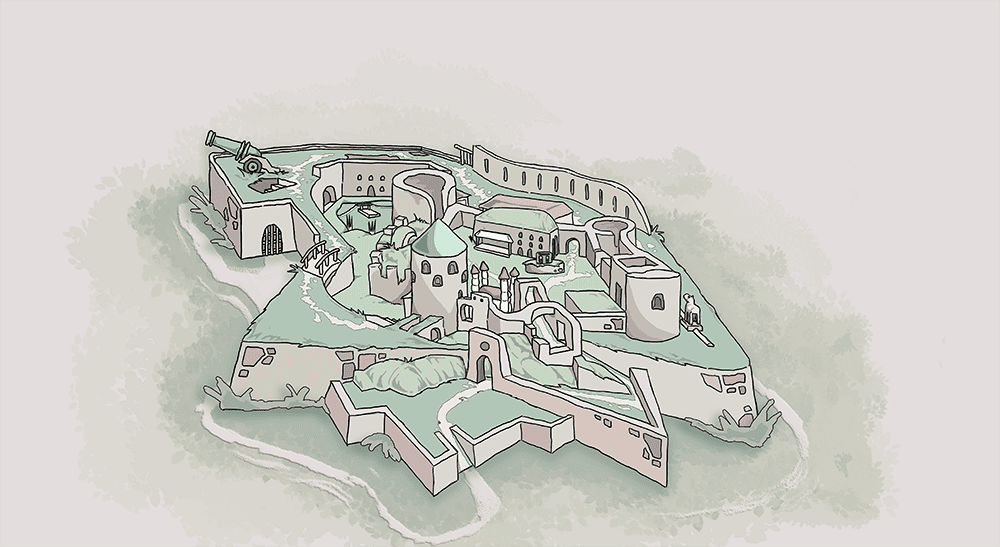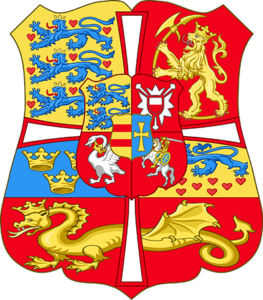ANNO 1308
Welcome to Bohus Fortress!
Named one of the seven wonders of Västra Götaland and a popular tourist destination. Bohus Fortress not only offers a unique history and magnificent architecture. Here you can play, learn, eat and socialize in a genuine and culturally rich environment. Welcome to discover the most powerful ruin in the Nordic region!

Don't miss the new digital tour
Now you can go back in time with our new guided tour in Swedish, Norwegian, Danish, German and English.
We recommend headphones for the most optimal experience. Enjoy!
To access the guide, you must visit this page with a mobile phone.

The history of Bohus Fortress
At the Peace of Roskilde in 1658, Bohuslän became Swedish, but Bohus Fortress had a far from peaceful existence. Since its foundation in 1308, the fortress has suffered 14 sieges, but has never been captured. After the Swedes became masters of Bohus, it was now instead the Danes and Norwegians who besieged the fortress, but without success.
The worst siege ever took place in the summer of 1678, when 15,000 Danes and Norwegians subjected the 800 Swedish and Finnish defenders to a massive bombardment over two months.
Read more about 700 years of war, marriage and finally peace.
The children at Bohus Fortress

Watch the movie
Don’t miss what’s happening at Bohus fortress

executioners
One of the worst and most notorious professions of the Middle Ages was that of the executioner. The main task of the executioner was to carry out punishments such as corporal punishment and the death penalty. Becoming an executioner was not something you chose yourself because the executioner had low social status and was both feared and ostracized from society. Most often, it was people who had been pardoned from their death sentence under the condition that they became executioners, but the executioner profession could also be passed down from father to son. A new executioner’s first task was often to execute the old executioner.
The abhorrence of the executioner was so strong that parents sometimes preferred to whip their children themselves, if they had been sentenced to such a thing. This was so that the children would not come into contact with the executioner. In church, the executioner and the rascal had their own place, at the back. In many places they were not allowed to take communion with others, and they were not even allowed to drink from the same chalice but from a separate, inferior one. Not only did the people hate the executioner, they also despised his wife and children.
No ordinary citizen wanted to marry an executioner’s child or a rascal’s child. Socializing was limited to prostitutes, thieves, robbers, street boys and similar groups. Their houses were in the worst parts of town or even outside the walls.
Christian IV and New Kungälv
In the early 1600s, fighting flares up between Sweden and Denmark/Norway, in the so-called Kalmar War. The King of Denmark, Kristian IV, moves several towns to be close to a fortress for protection. In 1611, the Swedes burn down Kungahälla, which at this time is located further along the Nordre River. Instead of rebuilding the town, King Christian IV orders the town to be rebuilt near Bohus, on the fortress island.
A decision that would cost more than it cost. The town was only here for about 30 years, then it was burned. Don’t miss the exhibition about Kristian IV and Ny-Kungälv!

Crime & punishment
1308- 1786
During its active years (1308-1786), the fortress was not only used as a castle and defense facility. As early as the 14th century, it was used as a city prison for political prisoners and, in all probability, all kinds of lawbreakers. The punishments that have been carried out at Bohus over the years have mainly been hard labor and, in special cases, various forms of imprisonment.
In our exhibition on crime and punishment, you can learn more about the fates sealed at the infamous Bohus Castle.
Queen Blanka of Namur
1320 – 1362
Blanka of Namur is born in 1320 and is Countess of what is now a province of Belgium. She becomes Queen of Sweden, Norway and Skåne from 1335 through her marriage to King Magnus Eriksson. The wedding takes place at Bohus Castle where the celebrations last for several days. Bohus became the royal residence for many years to come.
Together they had sons Erik and Håkan and three daughters. Håkan Magnusson was appointed King of Norway by the Norwegian nobles in 1343.

Watch the movie

Watch the movie
Thomas Leopold
1693 – 1771
While studying in Lund, Thomas was arrested for his Pietist creed and, after a trial in which he boldly confessed his faith, he was sentenced to prison. He was then 35 years old.
He was then imprisoned for his faith, first for 7 years at Bohus Fortress, then for just over 5 years at Kalmar Fortress, then for just under 5 years at Danviken Hospital and finally for 25 years at Bohus again. This makes him the longest surviving prisoner in Bohus history.




